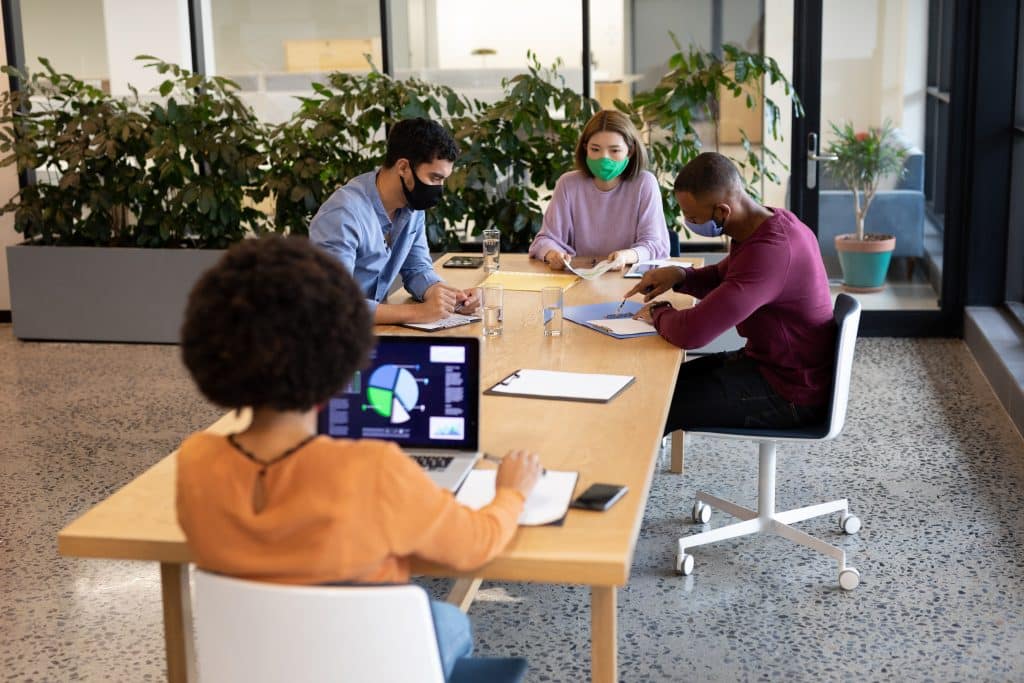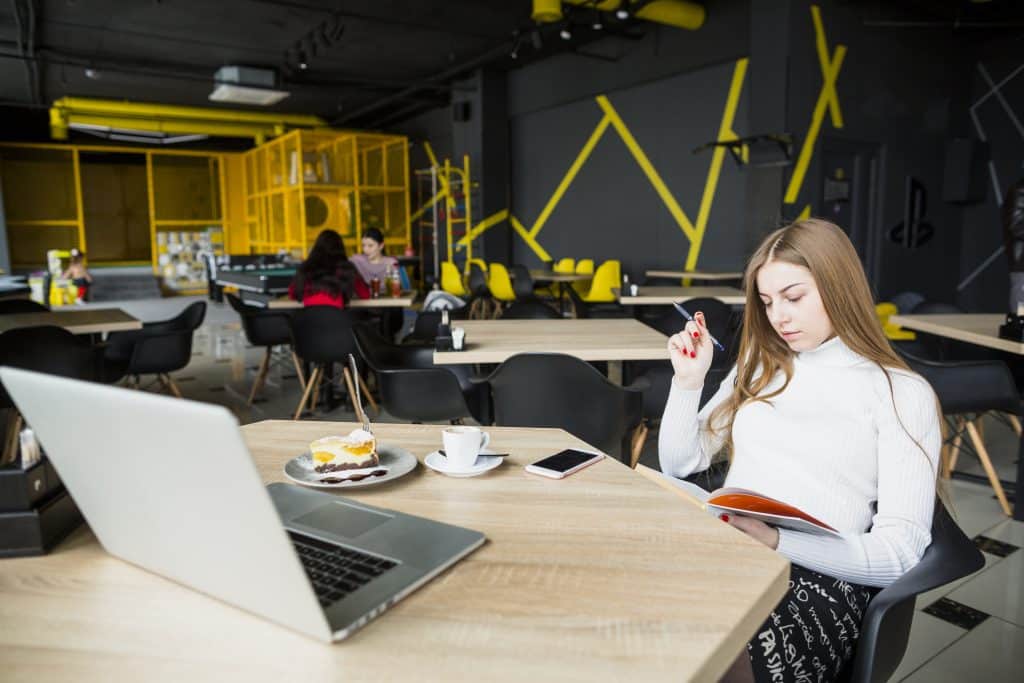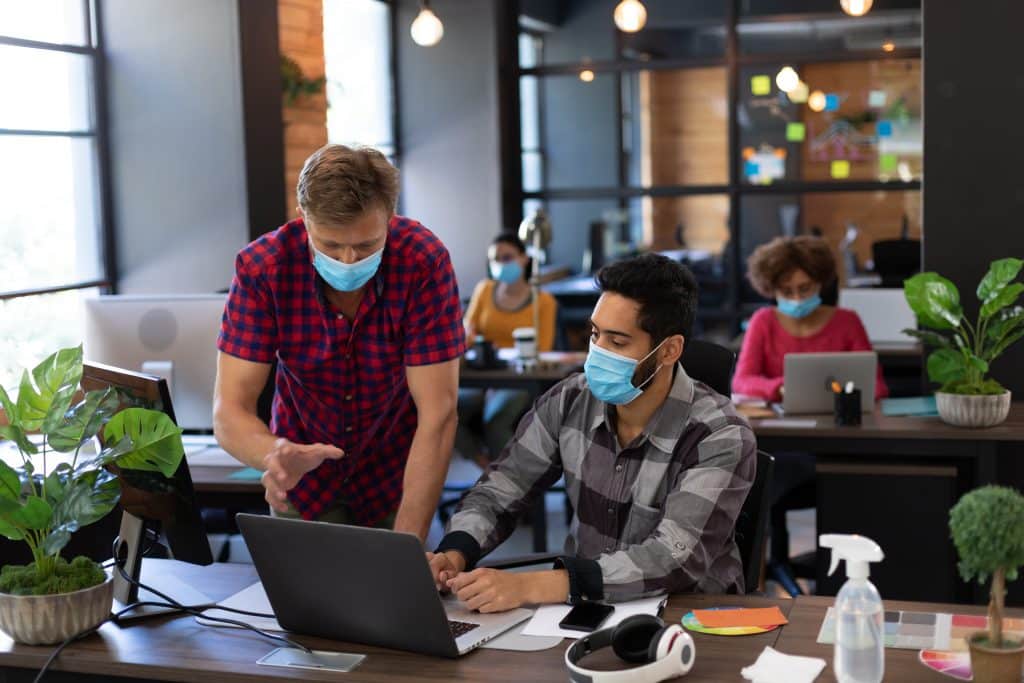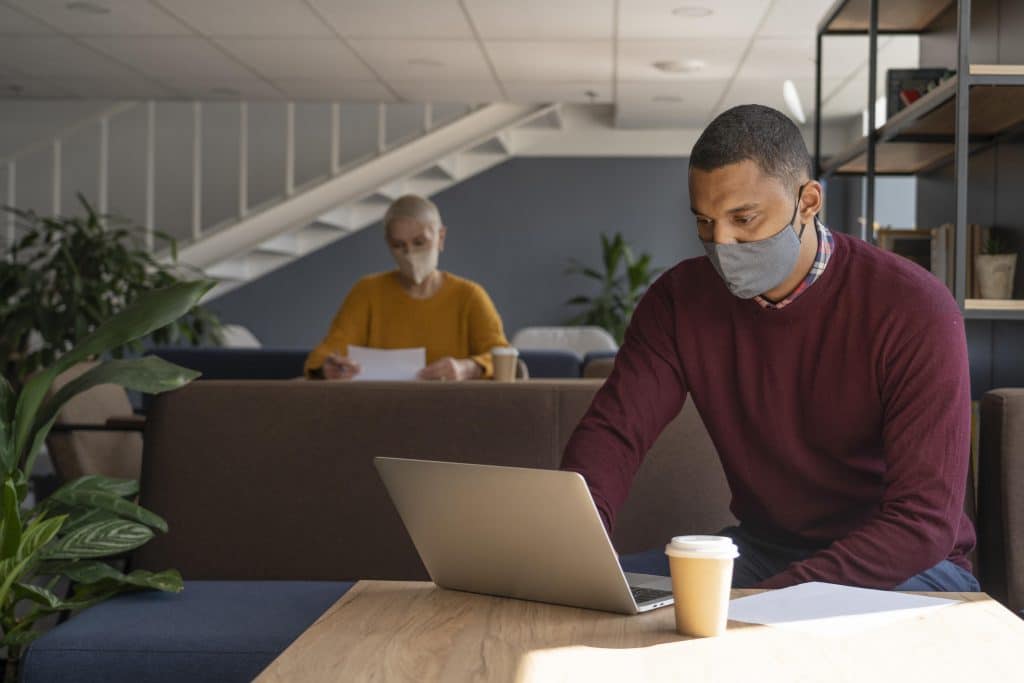Introduction
In the wake of COVID-19, the corporate world witnessed a seismic shift in space planning, fundamentally redefining the design and utilization of workspaces. This profound transformation, driven by the imperative to ensure health and safety, has introduced a new era in corporate interiors. The article delves into the pivotal ways in which the pandemic has reshaped workspace design, emphasizing the integration of health, safety, and flexibility as core elements. This shift is not merely a reaction to a global health crisis but a reimagining of the workspace as a dynamic, adaptable environment, tailored to meet the evolving needs of businesses in a post-pandemic world.
Reimagining Meeting Spaces Post-COVID-19

The pandemic has necessitated a reevaluation of meeting room designs, focusing on the following aspects:
- Enhanced Safety Protocols: Social distancing has become a cornerstone of space planning. Meeting rooms now accommodate fewer people to ensure safe distances, altering the traditional space-per-person metrics.
- Flexible and Adaptable Design: The rise of hybrid work models demands spaces that cater to both physical and virtual participants. This has led to the integration of advanced video conferencing technologies and adaptable furniture layouts.
- Health-Centric Modifications: There’s a heightened emphasis on ventilation and air quality, with many organizations upgrading HVAC systems and incorporating air filtration technologies to mitigate airborne transmission risks.
- Touchless Technology: The adoption of touchless technologies, such as automatic doors and voice-activated controls, reduces the risk of surface transmission.
- Emphasis on Mental Well-being: Spaces now incorporate elements that promote mental health, such as biophilic design, to create a more calming and stress-free environment.
Case Study: Adapting to New Norms
In response to the COVID-19 pandemic, a major tech company exemplified adaptability by transforming its corporate headquarters. They strategically reconfigured meeting spaces for greater physical distancing, implemented advanced air purification systems for enhanced safety, and introduced a hybrid meeting model to seamlessly integrate remote participants.
This comprehensive approach not only adhered to health guidelines but also set a new standard in workspace design, demonstrating a keen understanding of the evolving nature of work and collaboration in the face of global health challenges. This case study serves as a compelling example of how proactive and innovative design changes can create safer, more adaptable work environments in the corporate sector.
The Role of Technology in Reshaped Meeting Spaces

COVID-19 accelerated the integration of technology in meeting rooms. Key advancements include:
1. Hybrid Meeting Technologies Hybrid meeting technologies have become a cornerstone in modern meeting room design, facilitating a seamless blend of in-person and remote collaboration. Key features include:
- High-Quality Video Conferencing Tools: These are essential for clear and effective communication. Advanced cameras and microphones ensure that remote participants can see and hear clearly, while large screens in meeting rooms provide in-person attendees with a vivid view of remote contributors.
- Integrated Meeting Platforms: Solutions like Zoom, Microsoft Teams, or Cisco Webex are often integrated directly into meeting room systems, allowing for one-touch meeting starts and efficient management of virtual attendees.
- Content Sharing Capabilities: These technologies enable real-time sharing of digital content, ensuring that all participants, regardless of their location, can actively engage and contribute to the meeting.
2. Smart Room Systems Smart room systems enhance the functionality and safety of meeting spaces through automation and advanced controls:
- Automated Lighting and Ventilation: These systems can adjust lighting and airflow based on occupancy, time of day, or specific meeting requirements, improving energy efficiency and creating a comfortable environment.
- Voice-Activated Controls: To minimize touchpoints, many meeting rooms now feature voice-activated controls for various functions, including AV equipment, lighting, and blinds.
- Health and Safety Features: Some smart systems include air quality monitors and can adjust ventilation in real-time to ensure optimal air quality, an important factor in minimizing airborne virus transmission.
3. Virtual Reality (VR) and Augmented Reality (AR) VR and AR are emerging as innovative solutions for remote collaboration:
- Immersive Virtual Meetings: VR allows participants to enter a 3D virtual meeting space, offering a more immersive and engaging experience compared to traditional video calls.
- Enhanced Training and Presentations: AR can overlay digital information onto the physical world, making it useful for interactive presentations or training sessions where visualizing data or models in three dimensions can be beneficial.
- Reduced Need for Physical Presence: By providing a more immersive experience, VR and AR can reduce the necessity for physical travel to meetings, offering a safe and efficient alternative, especially in times when travel is restricted.
Navigating Building Codes and Regulations

The COVID-19 pandemic has necessitated a more stringent approach to adhering to building codes and health and safety standards. This is particularly crucial in the context of corporate space planning, where the health and well-being of employees and visitors are of paramount importance.
Updated Building Codes Post-pandemic building codes have seen significant updates to accommodate the new normal. Key areas of focus include:
- Air Quality: Regulations now often stipulate enhanced ventilation requirements, mandating systems that can effectively filter and circulate fresh air to reduce the spread of airborne pathogens.
- Occupancy Limits: To ensure social distancing, occupancy limits have been revised. This includes redefining the amount of space allocated per person in meeting rooms and common areas.
- Sanitation Facilities: There’s an increased emphasis on providing adequate sanitation facilities. This includes the installation of hand sanitizing stations and the provision for more frequent cleaning and disinfection of high-touch areas.
Health and Safety Standards Adherence to health and safety standards issued by authoritative bodies like the WHO (World Health Organization) or CDC (Centers for Disease Control and Prevention) is crucial. These standards provide guidelines on:
- Social Distancing Measures: Recommendations on maintaining safe distances between individuals in a workspace setting.
- Personal Protective Equipment (PPE): Guidelines on the use of PPE, such as masks and gloves, particularly in areas where social distancing is challenging.
- Hygiene Protocols: Instructions on regular hand washing, use of sanitizers, and other hygiene practices to minimize the risk of virus transmission.
- Health Monitoring: Advice on monitoring the health of employees, which may include regular temperature checks or health questionnaires.
Conclusion

The COVID-19 pandemic has been a catalyst for profound change in the realm of corporate space planning. It has compelled organizations to rethink their traditional approaches, pushing the boundaries of design and functionality. This period has witnessed a dramatic shift towards spaces that are not only efficient but also resilient to health challenges. The reimagined workspaces, characterized by enhanced safety measures, flexible layouts, and innovative technology integration, reflect a deep understanding of the pandemic’s impact on the work environment. This transformation goes beyond mere aesthetic changes; it’s a strategic response to ensure continuity and adaptability in the face of unforeseen challenges.
In the wake of COVID-19, organizations have been instrumental in transforming work environments to prioritize safety and health. Embracing new standards in workspace design, they have implemented social distancing-friendly layouts, enhanced ventilation systems, and touchless technologies. This shift signifies a strong commitment to employee and client well-being, marking a cultural change towards a health-conscious and adaptable workplace ethos.
Step into the future with Spotbooker, your essential tool for agile and safe workspace management. Discover how Spotbooker can revolutionize your space planning, blending adaptability, safety, and efficiency seamlessly. Join us in reshaping the corporate world, one booking at a time.






